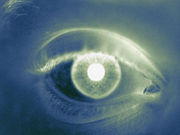Novel retinal lesion following anatomical distribution of optic nerve axons seen in 14.6 percent of survivors
THURSDAY, June 15, 2017 (HealthDay News) — A small percentage of Ebola virus disease (EVD) survivors have a novel retinal lesion, according to research published in the July issue of the U.S. Centers for Disease Control and Prevention’s Emerging Infectious Diseases.
Paul J. Steptoe, M.B.Ch.B., from the University of Liverpool in the United Kingdom, and colleagues conducted a case-control study in Freetown, Sierra Leone, to examine ocular signs in survivors of EVD. Ophthalmic examination, including widefield retinal imaging, was performed in 82 EVD survivors with ocular symptoms and 105 controls from asymptomatic civilian and military personnel and symptomatic eye clinic attendees.
The researchers found that Snellen visual acuity was ≤6/7.5 in 75.6 and 75.5 percent of EVD survivors and controls, respectively. Unilateral white cataracts were seen in 7.4 and 0 percent of EVD survivors and controls, respectively. In two EVD survivors with cataract but no anterior chamber inflammation, the aqueous humor was polymerase chain reaction-negative for Zaire Ebola virus, allowing cataract surgery to be performed. In 14.6 percent of EVD survivors and no controls there was a novel retinal lesion following anatomical distribution of the optic nerve axons.
“We have documented a novel retinal abnormality in EVD survivors that appears to be specific to EVD, although the proportion in the cohort with the condition is small,” the authors write.
Copyright © 2017 HealthDay. All rights reserved.








